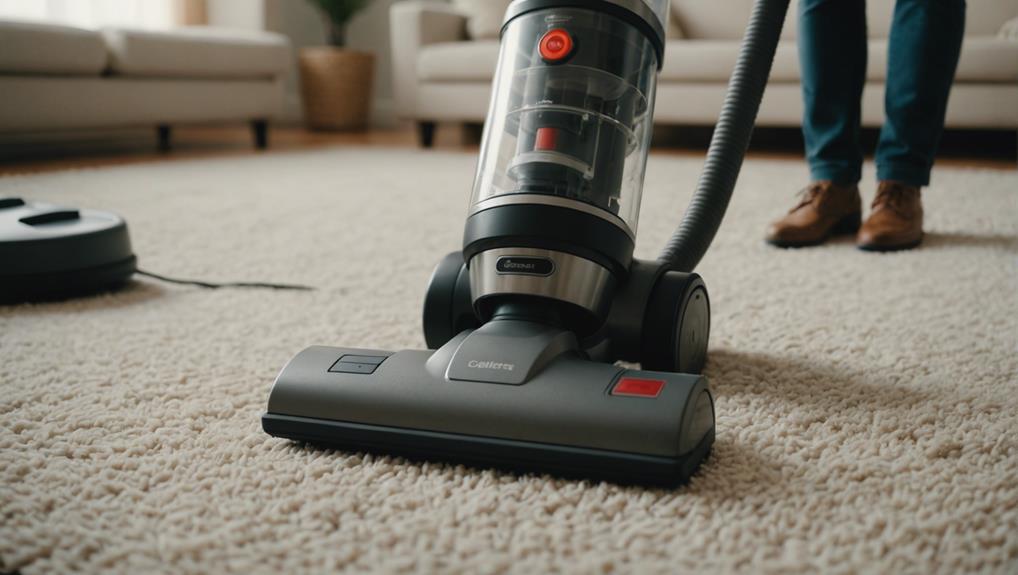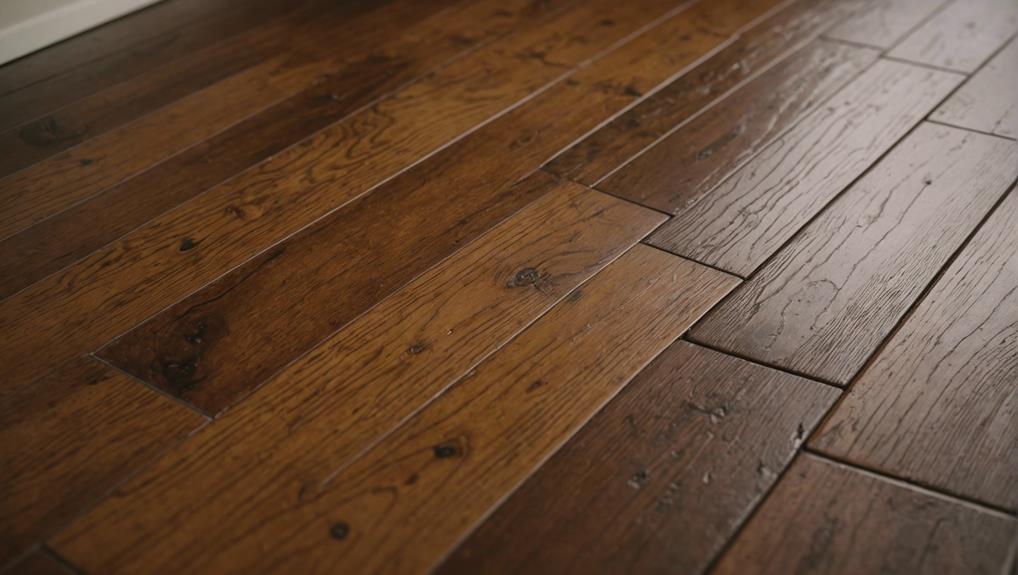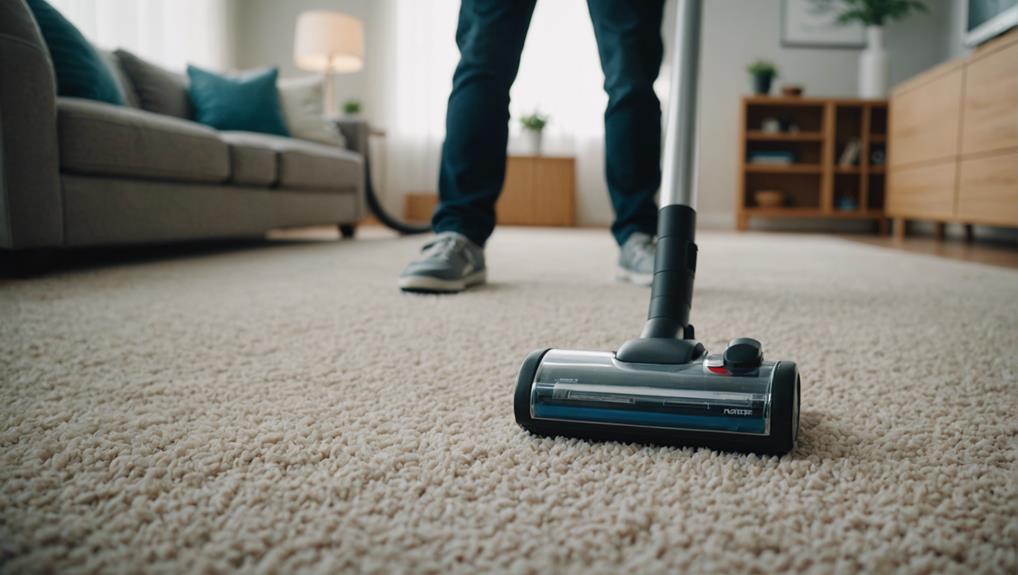For optimal carpet maintenance, follow these tips: employ preventive measures such as using doormats, taking off shoes indoors, and avoiding eating in carpeted areas. Address stains promptly with a mild dishwashing solution and cold water. Vacuum high-traffic spots every week and low-traffic areas twice a week, changing directions for a thorough clean. Ensure proper drying techniques are used to prevent stains, including using airflow and dehumidifiers. Additionally, use a carpet rake, consider hiring professional cleaners, and rotate area rugs for longevity. These suggestions will help preserve the cleanliness and quality of your carpet. For more in-depth care tips, keep on reading.
Key Takeaways
- Implement regular vacuuming in high-traffic areas to maintain freshness and cleanliness.
- Act promptly with effective stain treatments using mild dishwashing liquid solutions.
- Utilize proper drying techniques post-cleaning to prevent stains and promote longevity.
- Invest in quality vacuum cleaners with strong suction power and high-quality filters.
- Consider professional carpet cleaners and rotate area rugs for even wear.
Preventive Measures
To keep your carpet clean and well-maintained, start by implementing preventive measures to minimize dirt and stains. Place doormats at all entrance doors to trap debris and dirt before they make their way onto your carpet. Additionally, make it a habit to remove outdoor shoes before stepping onto your carpeted areas to prevent the tracking in of grime and dirt.
By limiting food consumption to non-carpeted areas, you can reduce the chances of spills and stains on your carpet.
When it comes to pet messes, proper training and regular bathroom breaks for your pets can help prevent accidents on your carpet. Investing in a quality vacuum cleaner designed for deep cleaning pet messes is essential to maintain cleanliness and hygiene.
Regular vacuuming can also help in removing dirt and debris that can accumulate and cause staining over time. By following these preventive measures, you can significantly lessen the amount of dirt and grime that affects your carpet.
Effective Stain Treatments

For effective stain treatments on your carpet, utilize a mild dishwashing liquid solution to dab and blot stains efficiently. When dealing with a stain, it's important to act promptly. First, mix a small amount of mild dishwashing liquid with water to create a gentle cleaning solution. Then, using a clean white cloth, dab the stained area to remove as much of the stain as possible.
After dabbing, rinse the area with cold water and blot it dry to prevent any residue from setting into the carpet fibers. To guarantee thorough drying, place paper towels over the wet spot and weigh them down with a heavy object overnight.
For stubborn stains that won't budge, consider using a targeted carpet stain remover. Remember to repeat the stain treatment steps as needed to fully remove the stain and prevent any long-term damage to your carpet. Effective stain treatments are essential for maintaining a clean and fresh carpet.
Regular Vacuuming Practices
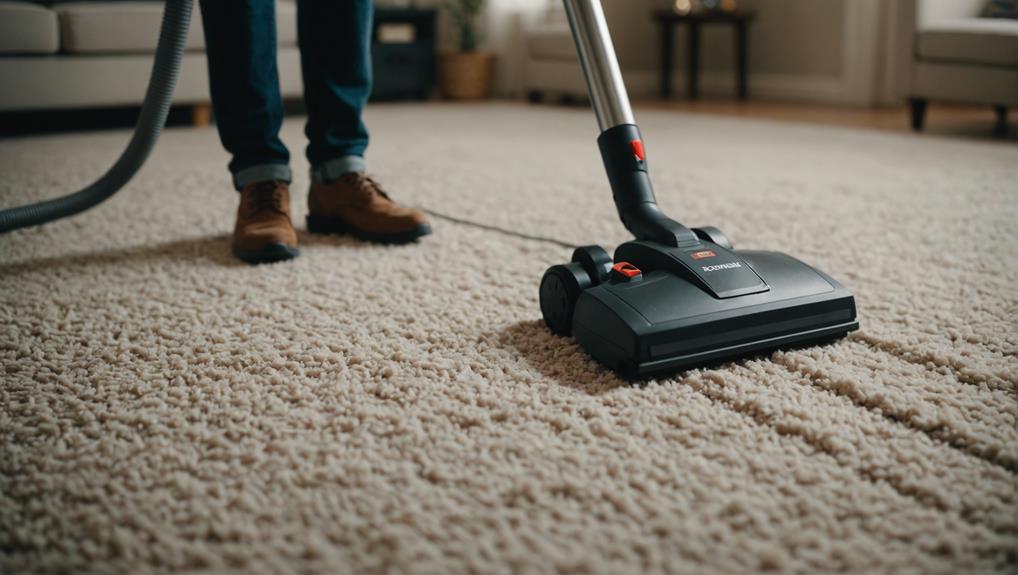
To maintain your carpet, vacuum high-traffic areas weekly and low-traffic spots twice a week. Make sure you use proper vacuuming techniques to effectively remove dirt and debris.
Focus on high-traffic zones to keep your carpet looking fresh and extend its lifespan.
Vacuum Frequency
Maintaining a regular vacuuming schedule is essential for keeping your carpet clean and in good condition. To effectively clean your carpet, focus on vacuum frequency based on the traffic each area receives. High-traffic areas demand more attention, requiring at least once a week vacuuming to prevent dirt buildup and maintain a fresh appearance. On the other hand, low-traffic zones can be vacuumed twice a week for general maintenance. Additionally, consider an annual deep cleaning for your entire carpet, with extra care given to high-traffic spots. Remember to promptly spot clean any stains to prevent permanent damage and uphold the carpet's appearance. Regular vacuuming not only helps in prolonging the life of your carpet but also contributes to a cleaner and healthier indoor environment overall.
| Area | Vacuum Frequency |
|---|---|
| High-Traffic | At least once a week |
| Low-Traffic | Twice a week |
Proper Technique
To effectively clean your carpet through regular vacuuming, focus on employing proper technique for maintaining its appearance and longevity. When vacuuming, pay special attention to high-traffic areas by cleaning them at least once a week to remove dirt and debris effectively.
It's important to use a vacuum with strong suction power and high-quality filters to guarantee a thorough clean. Remember to vary your vacuuming direction to lift embedded dirt and fluff up the carpet fibers, keeping them looking fresh and neat.
If you have pets or experience heavy foot traffic in your home, consider vacuuming more frequently to combat the additional dirt and hair they bring in. By implementing these proper vacuuming techniques and staying consistent with regular vacuuming, you can preserve your carpet's appearance and prolong its lifespan significantly.
High Traffic Areas
Regularly vacuuming high-traffic areas is essential to prevent dirt and debris buildup and maintain your carpet's cleanliness and appearance. High foot traffic can grind dirt into carpet fibers, making more frequent vacuuming necessary.
To keep your carpet looking its best and guarantee its longevity, consider the following:
- Vacuum high-traffic zones at least once a week to prevent dirt and debris from accumulating.
- Increase vacuuming frequency to twice a week in heavy foot traffic areas to maintain the carpet's appearance.
- Don't forget that dirt and soil particles can settle deep into carpet fibers, emphasizing the importance of regular vacuuming for cleanliness.
In addition to regular vacuuming, high-traffic areas may require spot cleaning to address specific stains and maintain the overall cleanliness of your carpet.
Prompt Stain Removal
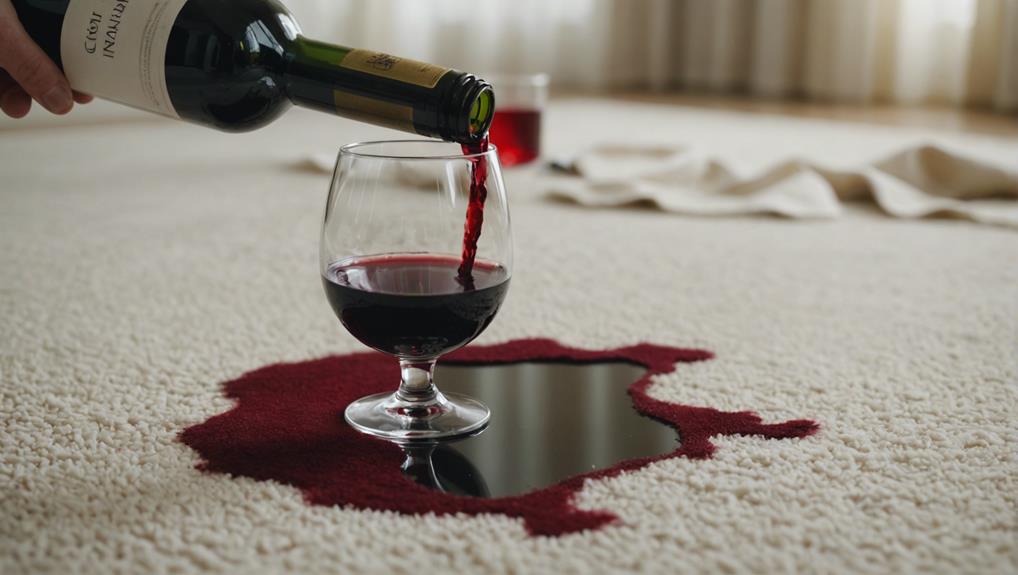
To effectively address stains on your carpet, it's important to act swiftly.
Blot liquid spills promptly with a clean cloth to prevent them from becoming permanent.
Utilize specialized carpet stain removers tailored to the type of spill for best results.
Quick Stain Removal Techniques
Act swiftly when tackling stains to prevent them from setting into your carpet fibers. Here are some quick stain removal techniques to help you keep your carpet looking fresh:
- Blot, Don't Rub: When dealing with liquid spills, immediately blot the area with a clean cloth or paper towel to absorb as much of the spill as possible.
- Use Mild Detergent: Create a solution of mild dishwashing liquid and water to dab on stains. Gently blot the stained area to lift the discoloration without damaging the carpet fibers.
- Rinse with Cold Water: After treating the stain, rinse the area with cold water to remove any leftover residue and prevent any soapy build-up.
Remember to act promptly, use gentle blotting motions, and rinse thoroughly to make sure effective stain removal without causing further damage to your carpet.
Best Stain Removal Products
How can you effectively tackle stains on your carpet for prompt removal?
When it comes to the best stain removal products, consider using carpet stain removers like Blue Magic Carpet Stain and Spot Lifter. These products work effectively to eliminate various stains from your carpet.
For pet stains and odors, opt for enzymatic sprays with neutral pH levels. They're specifically designed to target and remove pet-related stains and odors.
Additionally, foam cleaners are great for tackling tough stains on carpets, providing a deep cleaning action. OdoBan, when diluted with water, serves as a powerful deodorizer for your carpet, leaving it smelling fresh and clean.
Regularly using these carpet cleaning products not only aids in stain removal but also contributes to proper carpet care and maintenance.
Using Natural Cleaning Solutions
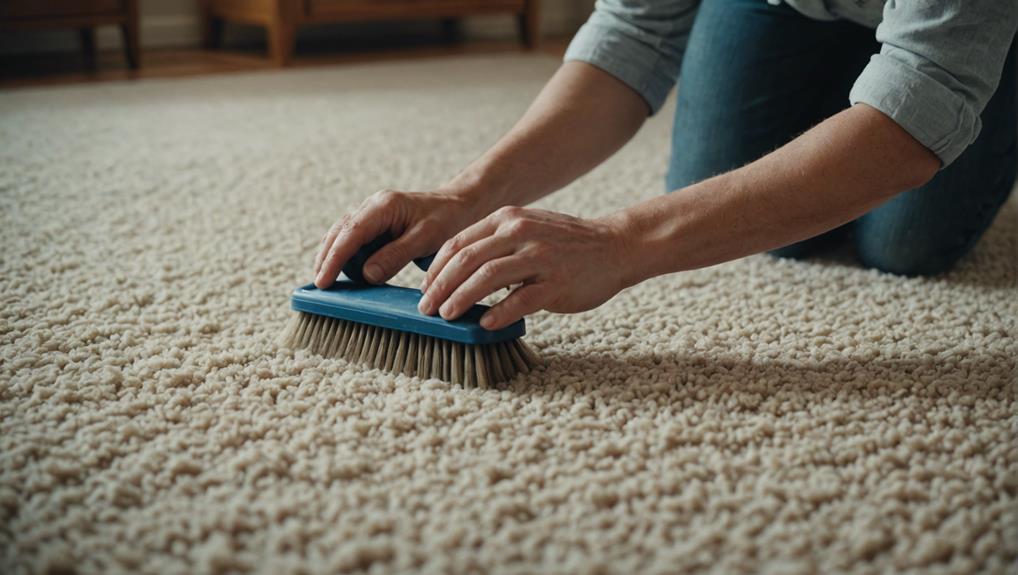
You can effectively clean carpet stains using natural solutions like club soda and white vinegar. These options aren't only eco-friendly but also efficient in removing tough stains without harming your carpet fibers.
Here are some essential tips for using natural cleaning solutions:
- Club soda works wonders on fresh spills; simply spray it on the stain and blot dry with a towel for quick removal.
- White vinegar is excellent for breaking down stains and preventing them from setting into the carpet fibers.
- Baking soda is a powerful ally for absorbing odors and breaking down grease in your carpets.
Remember to use these natural cleaning solutions sparingly to avoid clogging your vacuum filters and maintain effective carpet cleaning. By acting promptly and using these natural remedies, you can keep your carpets looking fresh and clean while also being mindful of the environment.
Proper Drying Techniques
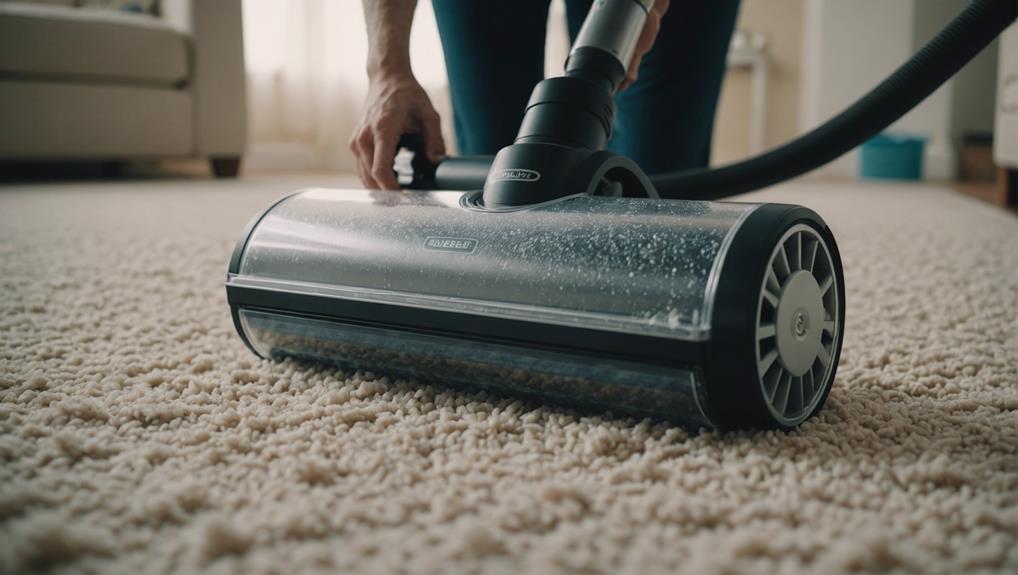
To guarantee your carpet dries thoroughly and efficiently, it's important to implement proper drying techniques. After cleaning, make sure to provide proper airflow by opening windows or using fans to expedite the drying process.
Avoid walking on the damp carpet to prevent stains from setting and to allow it to dry thoroughly. Utilizing a dehumidifier in the room can help absorb excess moisture and aid in faster drying of the carpet.
Consider using a carpet cleaner with a built-in drying feature to speed up the drying time and prevent mold growth. It's vital to allow ample time for the carpet to dry completely before placing furniture back on it to avoid any potential damage or staining.
Additional Longevity Tips
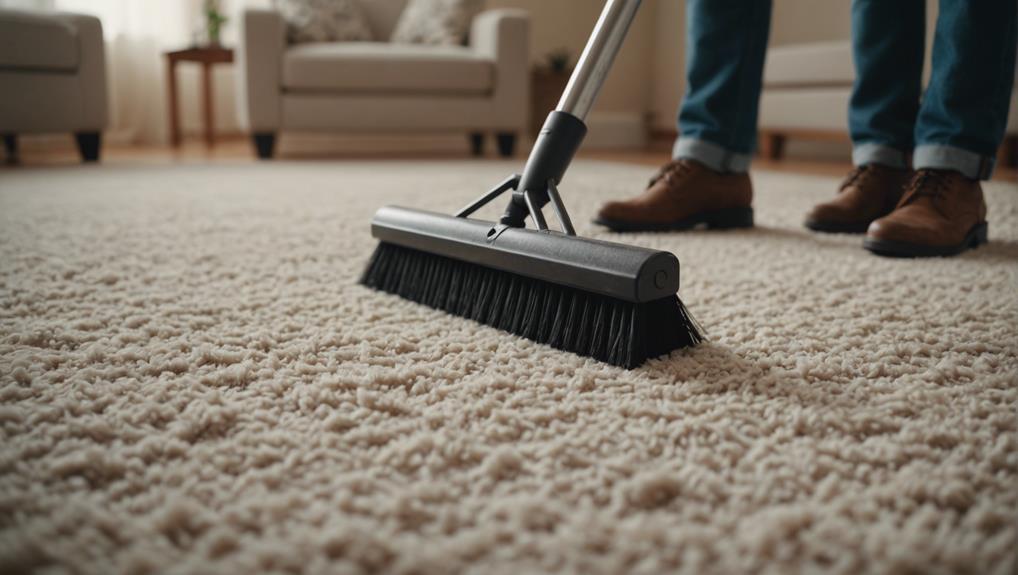
For extended carpet lifespan, incorporating additional maintenance tips beyond regular cleaning is essential. When it comes to preserving your carpet's quality and appearance, these tips can make a significant difference:
- Use a carpet rake or soft brush to lift the carpet fibers and prevent ground-in dirt.
- Invest in professional carpet cleaners recommended by the Carpet and Rug Institute to guarantee thorough cleaning.
- For area rugs, rotate them periodically to prevent uneven wear and tear.
Frequently Asked Questions
What Is the Most Effective Way to Clean Carpet?
The most effective way to clean carpet is by regularly vacuuming high-traffic areas to remove dirt and debris. Spot treat stains promptly with a mild dishwashing liquid solution. Consider professional cleaning biannually to maintain appearance and longevity.
What Is the Proper Way to Use a Carpet Cleaner?
To use a carpet cleaner properly, follow the manufacturer's guidelines on solution amount and water ratio. Test the solution in a hidden spot for colorfastness. Clean in overlapping passes, let it dry completely, and avoid walking on it too soon.
How Do I Shampoo My Carpet Like a Pro?
To shampoo your carpet like a pro, start by vacuuming thoroughly. Use a high-quality shampoo per instructions, work in small sections, let it sit, then rinse with clean water. Guarantee proper ventilation and drying for best results.
How to Get Deep Dirt Out of Carpet?
To get deep dirt out of carpet, use a vacuum with strong suction to remove embedded particles. Consider agitating fibers with a rake or brush before vacuuming thoroughly. Changing vacuum bags regularly and utilizing baking soda can help maintain cleanliness.
What are the essential tips for cleaning carpets properly?
When it comes to keeping your carpets in top condition, following the ultimate carpet cleaning guide is crucial. Vacuum regularly, treat stains immediately, and consider professional steam cleaning at least once a year. Keeping shoes off the carpet and using area rugs in high traffic areas can also help maintain cleanliness.
Conclusion
To sum up, maintaining a clean carpet is crucial for a healthy home environment. Did you know that regular vacuuming can remove up to 85% of dirt and allergens from your carpet?
By following these tips for preventive measures, effective stain treatments, and proper cleaning techniques, you can prolong the life of your carpet and keep it looking fresh for years to come.
Don't forget to schedule regular professional cleanings to maintain the cleanliness and longevity of your carpet.
